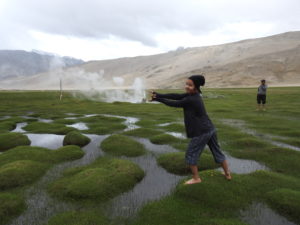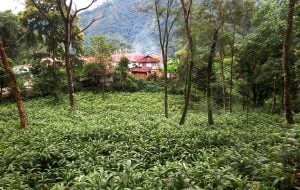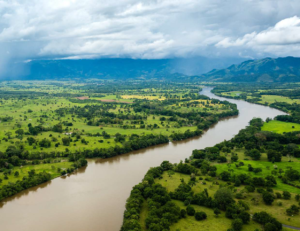The sixth summit on sustainable mountain development was held in Aizwal, in the Indian state of Mizoram, in September. In his inauguration of the conference, the chief minister of Mizoram, Lal Thanhawal, stressed that low carbon mountain development is key for areas prone to natural disasters.
A key issue in the sessions on climate change was the major knowledge gap around internally displaced persons (IDPs) due to climate change. One possible solution to deal with climate impacts is the creation of an institutionalised risk transfer and compensation mechanism. In this way poor people, often left out of formal sectors, can deal with any new vulnerabilities they must cope with. A social vulnerability index would help to identify these risks, but India does not have one.
The lack of research and under-explored areas also make it difficult for policy and practice to focus on the links between climate change adaptation, disaster risk reduction, and the sustainable development goals. Only when these gaps are addressed can a holistic approach, and an inclusive decision-making process, be adopted.
The session on adaptation also highlighted gaps in information, especially in appropriate endline and baseline data, scientific programmes on climate change adaptation, and long-term studies on adaptation issues in the mountains. One area that needs much more focus is women’s leadership to sustain the mountain ecosystem. While the work of women, and the ways they are impacted by climate change, is an understudied subject, this issue is becoming more and more important as men migrate away from their communities for work.
Financial leadership among the local communities should be built along with financial literacy, was the consensus of the session. Furthermore, making sure that policies enable the role of women and secure investments to enhance adaptive capacities is essential. This, of course, will not happen on its own. Strengthening the role of women goes hand in hand with systems thinking that allow the whole community – men and women – to achieve their full potential.
The Integrated Mountain Initiative (IMI) began in 2011 to integrate the knowledge and experience of multiple stakeholders and enable people to realise their full potential to sustain mountains. The first summit was held in Nainital, Uttarakhand, in 2011 with the support of ICIMOD and GIZ. Since then, the annual event has attracted various institutions and individuals from different states and sectors.
Attended by 17 legislators from seven Indian Himalayan states – including two ministers and nine members of parliament – the theme of this year’s summit was climate change, sustainable cities, and systems thinking.
The delegates from India made a presentation on the impacts of climate change in the country, particularly in the Himalayan region. They suggested that funds allocated to the legislatures under the local area development be earmarked (say 20%) for climate change adaptation. They stressed the importance of enhancing the spending on infrastructure in the mountain region (given that the unit cost is higher there), suggested that landslides be considered a calamity rather than an accident, and announced compensation for loss of life and property due to such events.
Systems thinking primarily focused on governance and management at the landscape level that challenges resource management, such as habitat fragmentation, overharvesting, biodiversity loss and human-wildlife conflict. Landscape management, a reconciliatory approach to competing social, economic and environmental objectives, focuses on the realisation of local level needs and action while considering regional, national and global goals. Building trust and relationships among people, and a commitment to bringing positive change, are the most important outcomes of the journey. Long term changes and policies are needed to bring governance to landscape level for successful mountain landscape policies and governance.
The sustainable cities programme focused on disaster mitigation, drinking water facilities and infrastructure. In mountain areas, there is a limit to which cities can develop where, and by how much. There needs to be solution on the resources available, and which is based on the ecology of the city. Social and human development factors need to be taken into consideration. One way is to encourage social networks or youth clubs to improve communication, intra-settlement cohesion and social mobility. Education and vocational training could enhance knowledge about rights and livelihood opportunities, while community leaders needed to mobilise members to collectively discuss issues and solutions.
In discussing how cities are developed, a discussion is needed on short- and medium-term risk reduction and on climate adaptation – otherwise, new infrastructure will be vulnerable. City development plans need to be re-examined to link a long-term vision for urban development, with an action plan for infrastructure upgrading, poverty reduction and better governance. This would ensure that the poor and vulnerable are catered for, and that existing asymmetries and structural vulnerabilities are addressed. But this is only possible if an appropriate urban platform to enable multi-stakeholder engagement is created, and appropriate fiscal and financial incentives for adaptation are linked to neighbourhood-led processes, especially in informal settlements.
![<p>The 6th Sustainable Mountain Development Summit was attended by 17 legislators from 7 Indian Himalayan state [image by: KS Murali]</p>](https://dialogue.earth/content/uploads/2017/11/20170922_093758.jpg)







